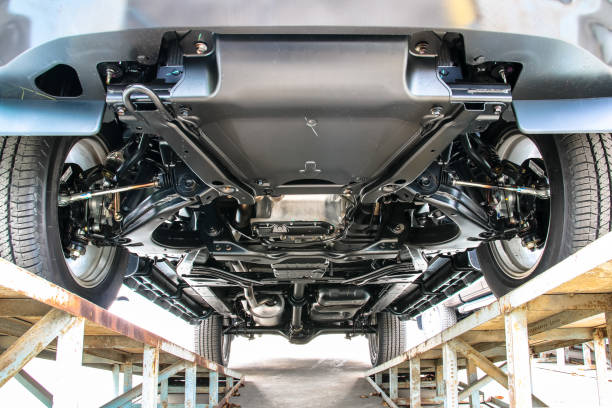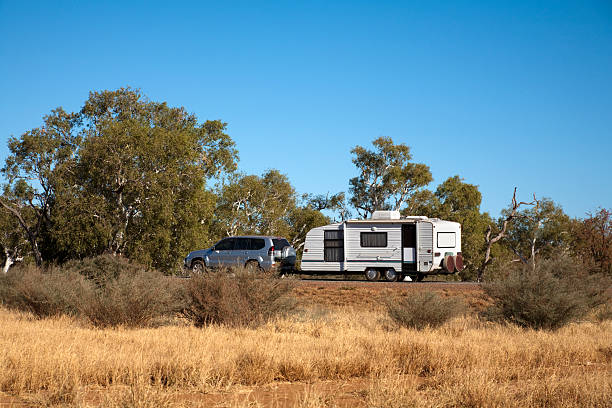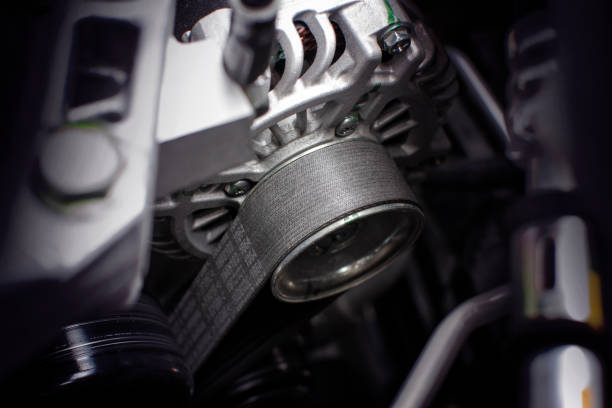Often one of your car’s most overlooked components, your tires are among the most critical aspects of your vehicle. Great tires will give you better traction when speeding up, but even more importantly will grip the road better when you’re trying to stop. So pay attention to this article about the top tire brands 2020.
There are some things you can cheap out on when you’re maintaining your vehicle. Tires aren’t one of them.
Mechanic’s Pick: Michelin

There’s a reason that you’ve heard of Michelin tires, even if you’ve never put them on your vehicle. They’re built to last year after year, and they come with a warranty to prove it. It doesn’t matter where you buy your Michelin tires from; you automatically get a comprehensive warranty that runs off both mileage and age.
Even better, every Michelin tire comes with a 3-year roadside assistance warranty. That means if your tire blows out on the freeway within the first three years, Michelin will pick up the tab.
But while the warranty and durability are great features, the innovative tread designs set them apart. The V-formation tread design provides superior traction in snow, rain, sleet, sand, and just about every other condition. When it comes to stopping, no other brand does it like Michelin.
The biggest drawback to Michelin tires has always been the price. They’re some of the most expensive tires available, but with innovative tread patterns to help you stop quicker, longer-lasting, and top of the line warranty protection, Michelin tires are worth every penny.
Pros
- Superior traction for better braking and acceleration
- Up to 13,000 more miles than other brands
- Comes with mileage warranties – up to 80,000 miles
- Comes with 3-year roadside assistance for tires
Cons
- Expensive compared to other tire brands
Most Versatile Tire Brand: Goodyear

No matter what size or style tire you’re looking for, Goodyear has what you’re looking for. They offer a wide range of tires for both every-day and performance use. Just like Michelin, they provide phenomenal treadwear warranties up to 80,000 miles depending on the type of tire you buy.
While Goodyear tires are more expensive than some other brands, they offer free shipping on all of their tires, helping offset some of the cost.
Of course, the biggest concern for your tires is the stopping power. Goodyear tires deliver. They’re right up there with Michelin and place their tires in the top tier of performance.
Pros
- Tread warranties up to 80,000 miles
- Free shipping
- Tons of options
Cons
- Still expensive compared to other brands
Best Value Brand: BFGoodrich

While BFGoodrich tires have a rich history, in 1990, Michelin bought them out. While you’re still getting a great tire, you’re essentially getting Michelin’s discount tire brand. Sure, Michelin tires are better, but BFGoodrich are still great tires, and you’re getting them at a much lower cost.
They still have phenomenal traction and gripping power and come with outstanding treadwear warranties. BFGoodrich tires’ most significant drawback is that they don’t have many options, especially when it comes to high-performance tires.
That’s because as soon as they become a high-performance tire, they get slapped with a Michelin tag, and the price tag skyrockets.
Pros
- Great warranties
- Affordably priced
- Tires provide great traction
Cons
- Limited options
Value Brand Runner Up: Dunlop

Like BFGoodrich is the discount tire for Michelin, Dunlop is the discount tire for Goodyear. While they are close to BFGoodrich in just about every way, they suffer from low-grade heat transferring capabilities due to their outdated tread design.
This causes the tread to wear out sooner, but Dunlop offsets some of those concerns by offering at least a 40,000-mile warranty on every one of their new tires. Dunlop tires provide excellent braking power, and you’ll be hard-pressed to beat the price with any other reliable brand.
Pros
- Very affordable
- All tires have at least a 40,000-mile warranty
- Great braking power
Cons
- Limited heat transferring capabilities cause tires to wear out sooner.
Honorable Mention: Bridgestone

Bridgestone tires are phenomenal – they’re just not as good as a Michelin or a Goodyear. They offer exceptional tread-life warranties, up to 80,000 miles. Furthermore, they offer a ton of tire options. Whether you’re looking for tires to improve your fuel efficiency or tires to handle the racetrack and still stop you on a dime, Bridgestone makes a tire for you.
They utilize cutting edge innovation to get the most out of their tires and even have a unique feature to help prevent tire blowouts after a puncture. This innovative technology allows you to drive up to 50 miles at 50 miles per hour after your tire has been punctured. No more getting stranded on the side of the road!
Pros
- Excellent tread-life warranties up to 80,000 miles
- Tons of tire options
- Blowout resistant
- Options for both fuel efficiency and performance
Cons
- Expensive – and still not a Michelin or Goodyear
Buyer’s Guide
Considering how essential your vehicle’s tires are, you might be a little worried about finding the perfect set for your car. Don’t stress out about it, and just keep reading. We’ll walk you through everything you need to know. That way, you can move on from your tires and get your focus back on the road!
Why Your Brand Matters
Every brand we mentioned here is excellent. Really, you can’t go wrong with any of them. Now, if you try to slap some knock-off generic tires from a company that you’ve never heard of on your vehicle, you’re in for some trouble.
There’s a reason they’re cheap. Either they won’t last, or even worse, they won’t give you the traction you need to stop on a dime. It doesn’t matter how big and powerful your brakes are. If your tires don’t get good traction, you’ll just end up sliding all over the place.
There are areas you can cheap out; your tires aren’t one of them. Go with a brand you can trust. It’s not worth the risk.
Finding Your Tire Size
It doesn’t matter what brand you choose; your tire size is the same. It’s standard across the board and looks something like this: P245/75R17. While you can look on the side of your current tires to see what size you have, a better option is to look in your door jam to see what size is there.
That way, if anyone ever put the wrong tires on your car, you’re not regularly replacing it with the wrong size. But what do all those numbers mean, and why do they matter?
The first letter – “P” in our example – is for the tire’s load rating. For personal trucks and cars, you’ll typically see either a “P” or “LT.” “P” is for passenger vehicles, and “LT” is for light trucks. Tires with an “LT” labeling can handle higher load ranges and typically need to be inflated to a higher psi.
The first number – 245 in our example – tells you the width of the tire in millimeters. The second number – 75 in our example – is the tire’s height to width ratio. A tire with a 75 means that the height is 75 percent of the tire’s width.
The second letter in the tire size tells you the construction of the tire. While this is typically an “R” in modern tires, which stands for radial tires, this isn’t always the case, and you might see bias or other style tires with a different letter marking.
The final number in the tire sizes tells you the tire’s rim size in inches. The rim size is equivalent to the wheel’s diameter. Keep in mind that the first number is in millimeters while the rim size is in inches.
What Sizes you Can Change – And the Ones You Can’t
While it’s typically best to keep the manufacturer recommended size tires on your vehicle, there are some sizes you can tweak a little bit if you know what you’re doing.
The Ones You Can Change
The most common tire size to change is the width of the tire. For instance, if your original tire was a 245, you might switch it to a 235 or 255 instead.
You’ll just need to make sure that your tires don’t end up rubbing on any part of the wheel well while turning. If they don’t, you should be good to go. However, don’t ever change the tire width by more than 10-20 millimeters from the original manufacturer recommended tire size.
The same rule of thumb goes for the tire’s height to width ratio. You can make minor changes here as long as the tire doesn’t rub up against anything, but you shouldn’t make any significant changes.
Don’t Mess with These Sizes
Don’t mess with the rim size. Seriously, the new tire won’t fit. You’ll either have a tire sitting loosely on the rim so you can’t get any air in it, or you’ll tear your tire trying to get it over the rim. Don’t mess with this size.
If your vehicle requires a tire with an “LT” load range, don’t go down to a “P” load range. You’re risking a blowout since your tires can’t handle the weight you’re putting on them. However, you can put tires with an “LT” load range on a vehicle that requires a “P” load range, although the tire will cost you more.
Durability or Performance?

In a perfect world, you’d get both, but often you’re stuck with one or the other. That’s because the better traction your tire gets, the more it rubs against the road, causing it to wear out quicker. While you’ll have to find a tire that doesn’t burn rubber too quickly, you don’t want to get a tire that’s going to last forever by having terrible traction.
That’s why the essential factor to consider when buying a tire is how well it stops, not how long it will last.
Don’t Change them Yourself
Changing your tires is different than putting the spare on. That’s because when you get new tires, you aren’t getting new rims. The old tire has to be taken off the rim with a special tire machine, and then the same device allows the technician to put the new tire on.
Without that machine, it’s an incredibly arduous process and often results in people utilizing unsafe practices to change their tire. Most places will change your tires for you for free if you buy your tires there. Take them up on the offer – it’s not worth the headache otherwise.
Change the Axle Together and Never Mix Tread Patterns
Never change a single tire. At the very least, you should change all the tires on the same axle, so your tires wear evenly. Having tires wear evenly does more than just extend the life of your tires. They also provide more even braking and acceleration.
Additionally, it would be best if you never mixed tread patterns. Mixing tread patterns can lead to uneven acceleration and braking. It might not sound like much, but if your vehicle is pulling unevenly, this can very easily lead to an accident.
What Tire Warranties Don’t Cover
Treadwear warranties are great, and they offer you the peace of mind that the tires you bought are high-quality and will last. However, treadwear warranties don’t cover everything.
They only cover typical wear and tear. If you run over a nail or get a flat because of any debris in the road, this isn’t covered. This can be incredibly frustrating if you just bought a new set of tires. But the warranty will cover any defects in manufacturing.
The Final Verdict
Your vehicle’s tires are expensive, but more importantly, they’re one of the most significant safety features in your car. Doing your research and spending a little extra on a good set of tires can be the difference between narrowly avoiding an accident and sliding into the car in front of you at 30 miles per hour.
Not all tires are created equal. Spend the extra money now for the peace of mind and safety that comes with a great set of tires on your vehicle.








